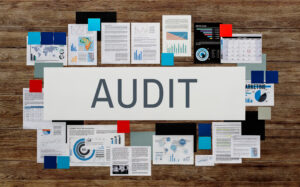Streamlining Documentation for ISO 9001:2015 Transition
One of the key changes introduced in ISO 9001:2015 is the flexibility regarding documentation. The 2015 version allows organizations to streamline their processes and reduce excessive paperwork. In this article, we explore how organizations can effectively streamline their documentation during the transition while ensuring compliance with the new requirements.
Changes in Documentation Requirements
ISO 9001:2015 provides more flexibility in how organizations manage documentation, focusing more on the effectiveness of processes rather than rigid document control. Key changes include:
- Reduced Documentation Burden: Organizations no longer need to maintain specific documented procedures, except where required by law or regulation.
- Flexible Document Control: Organizations have more discretion in determining the level of detail needed in documents and records.
- Focus on Outcomes: The emphasis is now on ensuring the desired outcomes of processes rather than on excessive documentation.
How to Streamline Documentation for ISO 9001:2015
To effectively streamline documentation while ensuring compliance with ISO 9001:2015, follow these key strategies:
- Review Existing Documentation: Assess current QMS documentation to identify redundancies or unnecessary documents that do not add value to process effectiveness.
- Focus on Process Efficiency: Ensure that documented procedures are relevant and directly support process effectiveness. Remove outdated or irrelevant procedures.
- Document What is Required: Only document what is necessary to meet regulatory requirements, customer expectations, and ISO 9001:2015 guidelines.
- Leverage Technology: Use digital tools for document control, making it easier to maintain, update, and share documents while reducing the risk of errors.
Benefits of Streamlining Documentation
Streamlining your documentation process offers several advantages:
- Reduced Complexity: By eliminating unnecessary documentation, organizations can simplify their QMS, making it easier for employees to follow processes.
- Increased Efficiency: Less time spent managing and maintaining documents means more time can be dedicated to improving processes and delivering value.
- Improved Compliance: By focusing on the essential documents and processes, your organization can more easily meet regulatory and customer requirements.
Conclusion
Streamlining documentation during the ISO 9001:2015 transition is essential for improving the efficiency of your quality management system. By focusing on relevant, value-adding documentation, organizations can not only comply with the new standard but also enhance overall operational performance. For more information about managing documentation in ISO 9001:2015, visit QMII's registration page.



